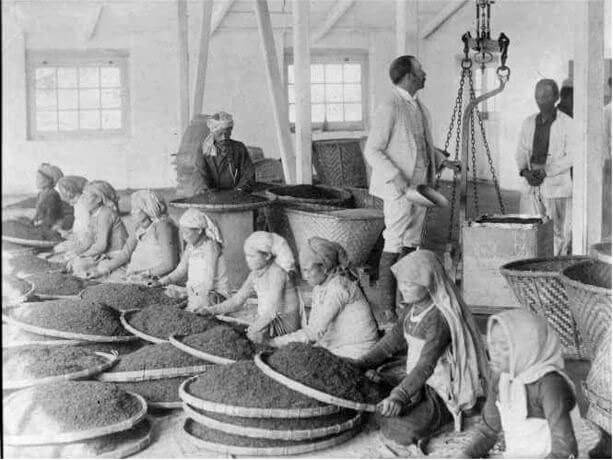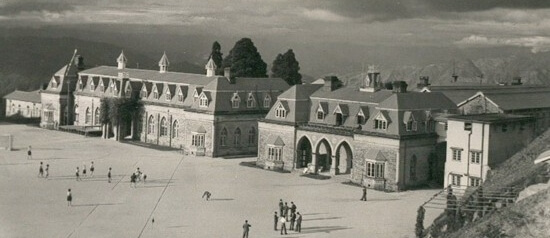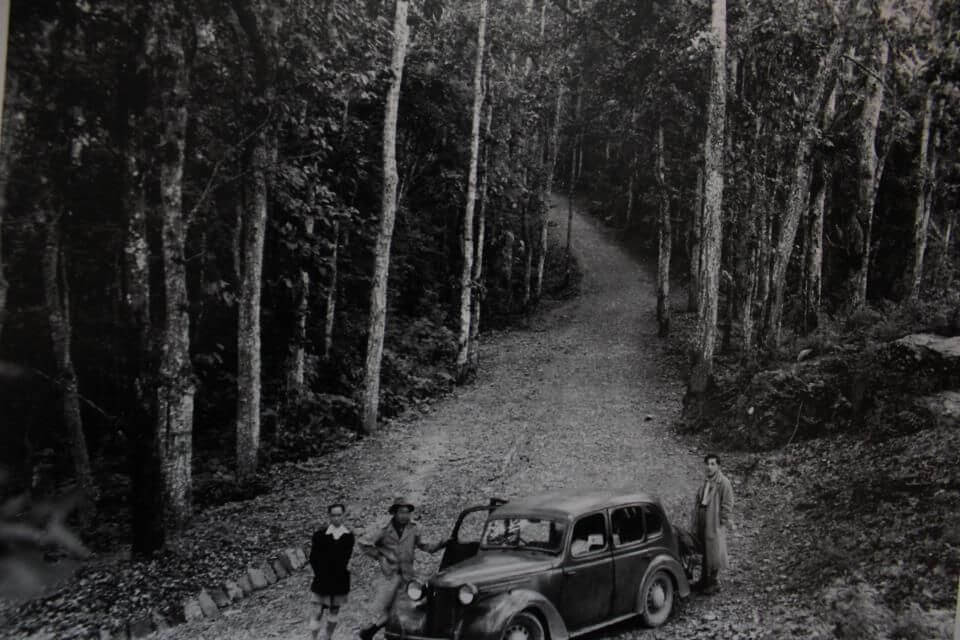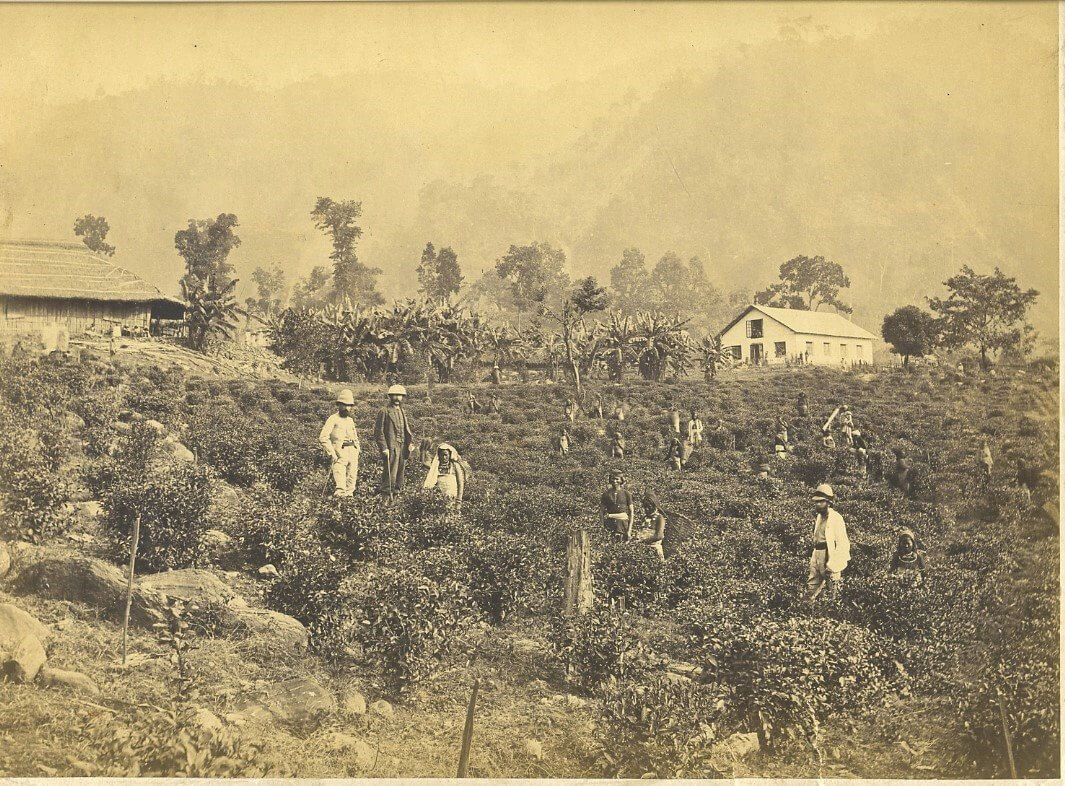The role of the British in the Darjeeling hills is of great importance in history. The British ruled Darjeeling for over a century, leaving a rich legacy behind. The British decorated the place with a Sanatorium, Plantation, Railways, Roadways, Public Works, Tourism, etc. Nonetheless, Darjeeling’s climate and geographic location had many advantages to offer to the British Masters. They saw it in their Imperial interest to keep the region under direct management and constant watch. Let’s enjoy an old video of the British era –
Table of Contents
DARJEELING AS A HILL STATION/SANATORIUM:
History shows that the importance of Darjeeling lies in its advantages as a Sanatorium and its position as the only hill station of Calcutta. The lofty mountains with the snow-covered peaks, the bracing climate, and the magnificent forests attracted the British pioneers to begin their adventures on the slopes of Darjeeling. J.D. Herbert recommended Darjeeling as a health station for European troops, mainly for its cold climate. In 1828, Captain Lloyd and Mr. J.W. Grant, the Commercial Resident at Malda, came to the Hills and were attracted by the position of Darjeeling. J.W. Grant and Captain Lloyd proposed establishing a sanatorium at Darjeeling under the notice of Lord William Bentinck, then Governor-General, for the favourable climate.
The Officers of the Geological Survey investigated the mountainous area of Darjeeling. Lord Napier of Royal Engineers laid out the town at an altitude of 2,134m (7,000 ft.). Dr. Campbell became the first Superintendent of the Sanatorium in 1839. Moreover, he also set up a market, popularly known as ‘Gundri Bazaar’ and a courthouse.
The town also became a tourist destination known as the “Queen of the Hills.” Urbanization through establishing a Sanatorium at the nucleus town also led to the growth of employment opportunities and hence to population growth. Darjeeling’s moderate climate prompted its improvement as a hill station for the British from the summer heat of the plains. The Eden Sanitarium was built in 1882 and named after the governor of Bengal, Sir Ashley Eden, and the Lowis Jubilee Sanitarium for Indians was set up in 1887.
Read more about the history of Darjeeling
DARJEELING PLANTATION INDUSTRIES:

Dr. Campbell brought about changes by encouraging immigration and introducing tea and cinchona cultivation, which later became significant attractions for the British.
Tea estates began in Darjeeling in 1841. The main tea trial nursery was raised by Dr. Campbell in Jalapahar and later moved to Lebong in 1845. The first tea garden began in Upper Takvar in 1852, raised by Captain Masson and Mr. Treustler. The Planter’s Club was set up in 1868. The British encouraged the boom of the plantation industry in Darjeeling not only for economic bonanza but also for the beautification of the place. In Darjeeling, topography, climatic variations, soil condition, and slope all is favourable or congenial for the cultivation of tea. The British sponsored the plantation by investing their capital.
Similarly, Dr. Anderson’s cultivation of Cinchona in Darjeeling commenced in 1862 in Mungpoo. It is supplied in hospitals as a cheap remedy for malaria. The initial objective of the Directorate of Cinchona was to grow different species of Cinchona trees to produce the lifesaving Anti-Malaria drug Quinine from the bark. Besides Mungpoo, Cinchona cultivation was established in Munsong in 1901, Rongo in 1938, and Latpanchor in 1943.
Read more to explore the history of the tea plantation industry in the Darjeeling hills
BRITISH EDUCATIONAL LEGACY:

Darjeeling has a rich history of educational establishments. Since 1835, Darjeeling became the educational hub for the British, while the native people also got enlightened through Western education. Indeed, Christian Missionaries and other voluntary organizations played a significant role in imparting education among the masses.
The Scottish missionaries constructed schools and training centers for British residents. For instance, the Loreto Convent was established in 1847, St. Paul’s School of Calcutta shifted in 1864, and other educational institutions were established. The District Committee of public instruction assisted the Deputy Commissioner in the education administration. Christian Missionaries played a significant role in imparting education among the masses. Revd. William Macfarlane created the nucleus of the Training School at Kalimpong. The village weaving industry among the peasantry in the Kalimpong hills developed. The Church of Scotland Mission started classes to teach an improved pattern of weaving, crochet work, and lacework. Further, the Church of Scotland Mission’s subsequent work became the most crucial factor in spreading education among the local people. Still, the educational legacy of the British was sustained in the Darjeeling hills.
Read more to explore the history of education in the Darjeeling hills
TRANSPORT AND COMMUNICATION:

Before the advent of the British, the transport and communication system in the region was of primitive type, depending mainly on bullock carts. Before the construction of the road in Darjeeling, 17,000 bullock carts were plying in the district. The name Hill Cart Road sustains this historical reality. It is the national highway from Siliguri to Darjeeling. The Northern Bengal State Railway opened in 1878, and the Mountain Railway in 1880. The Darjeeling Himalayan Railway Co. came into existence in 1881. Toy Train (Darjeeling Himalayan Railway) was granted World Heritage status by UNESCO in 1999. Likewise, Ropeways were also erected for economic progress, such as the Kalimpong Ropeway Co. Ltd. (1928) and Darjeeling Ropeway Co. Ltd. (1939).
PRESERVATION OF FORESTS AND LANDSLIPS:

Forest conservancy began in Darjeeling in 1864 by Dr. T. Anderson. The preservation of forests became an excellent comprehension of the British Government. To conserve and to check foreign intrusion, the British passed Forest Acts. The preservation of forests is a unique step towards the visible threats of global warming.
Earthquake-induced landslides were a compelling issue of land degradation during the colonial period. In 1899, Darjeeling was shooked by significant landslides that caused severe destruction to the town and the native population. A Committee was selected, comprising architects and occupants of Darjeeling, to assess and write about the state of structures, streets, and channels in Darjeeling and devise measures to forestall the event of landslips in the future to limit their results. The committee, assisted by Mr. Holland of the Geological Survey Department, made a systematic and penetrating investigation visiting every part of Darjeeling. The Bengal Act I of 1900 was passed into law by the bill recommended by the Committee.
Darjeeling has been popular for Tea, Timber, and Tourism since British rule in India. The Europeans gave Darjeeling a formal metropolitan shape to fulfill their inclinations, such as urban institutions like health, sanitation, municipality, educational institutions, water system, electricity, roads, railways, markets, etc. Therefore, European culture had a tremendous impact on the inhabitants of Darjeeling. Colonial architecture such as mock Tudor residences, Gothic churches, the Raj Bhawan (Governor House), Planters’ Club, and various educational institutions still sustained in the Darjeeling hills. However, the region’s socio-economic problems not addressed during British rule continued to linger after they left India. Between 1835 and 1947, Darjeeling had many advantages to offer to the British masters. So, the British ruled Darjeeling for a long time, and their legacies are still relevant to the hills.


A very enlightening writeup. It provided me with very crucial facts which are very important. To know the historical facts about our own hometown in such a lovely writeup was really fruitful. Thanks kishan for your efforts to write such a informative and interesting article.
Wonderful Darjeeling 👍
A wonderful and praiseworthy work indeed. Congrats and thanks for your great work Sir Kishan. I would like to know more from your complete work. All the best for your future contributions.
“Great share”!
Well written….
Great work sir